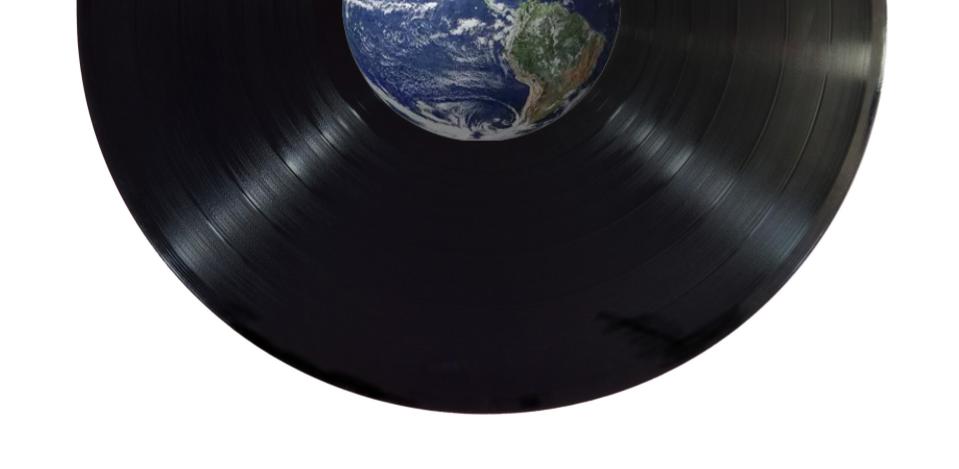The Discogs Database Submission Guidelines are the backbone of Discogs; the product of almost 20 years of community-driven discussion about the best way to catalog all the music in the world.
As we launch the Database Guidelines Translation Project, it seems like a good time to look back at the history of the Discogs Database Submission Guidelines…
The Start of the Discography
Discogs began in early 2000, as a hobby project by DJ and developer Kevin Lewandowski. He was looking for a better way to catalog his electronic music collection. The very first release Kevin added to Discogs was Stockholm by The Persuader.
In October 2000, when Keven first invited other music lovers to add to the discography, there were no Database Submission Guidelines. Kevin started by adding about 250 of his own records and CDs, and hosted Discogs on a scrap Pentium II server in his closet.
Contributors started as a small, but dedicated group. All submissions were entered into a loosely structured form which did not support credits. Kevin would then manually check each and every submission, and fix any typos and capitalization errors!
By February 2001, Discogs included 1,943 releases and 2,440 artists, but only 56 contributors. Kevin was still the top contributor, but several other contributors were closing in. At this point, there was a simple FAQ rather than Database Submission Guidelines:

Labels and releases only displayed after they were manually reviewed, edited, and approved. In 2001, Kevin gave about 10 users access to edit and approve submissions. These users were referred to as editors. So, although there weren’t Submission Guidelines for guidance, there was more manual oversight. Users could also ask questions and get feedback in the original Discogs Forums.
Later in 2001, the submission form was rewritten, and less manual oversight and editing was needed. However, data still needed approval before being added to Discogs; about 50 of the top contributors were given access to the approval form, and this was the beginning of the Moderators group.
As of 2004, there was still a distinct editors and moderators group. Editors could moderate, and also had access to process the updates submitted to labels, artists, releases.
Official Submission Guidelines
In 2004, Kevin rewrote the whole submission form again. The major change was that the underlying release data structure was much more flexible, immediately allowing multiple artists and labels per release, multiple artists per track, and multiple credits per track. Furthermore, the release history functionality was added, allowing contributors to see the previous updates on submissions.
As the discography and contributor community continued to grow, it was clear that simple FAQs weren’t enough guidance for the contributor community. A group of editors and moderators worked together to document how to properly add data to Discogs. By the end of 2004, there was a 2,272 word summary of how to use the “Add Release Form.” It’s easy to see how this document evolved into the Submission Guidelines we use today.
The Discogs community had been asking for easy tools to help with buying and selling. So the Discogs Marketplace was added in 2005. Before Marketplace tools were added, many users were simply using their Collection as a way to list items they wanted to sell! Although the Marketplace addition didn’t fundamentally change the underlying discography, it brought in more users interested in buying and selling. Many of these new users eventually contributed items to the database. As the functionality of Discogs expanded, so too did the documentation explaining how to add information to the discography.
By 2006, the Submission Guidelines were basically a condensed version of our current guidelines. The Submission Guidelines document was 7,803 words long, and included only seven sections. Here’s a snippet from the Submission Guidelines in January 2006:

Moderation And Voting
Discogs continued to grow. In January 2007, Discogs documented 793,581 releases, 668,356 artists, and 70,110 labels. However, manual moderation was starting to cause problems. In August of 2007, there were over 20,000 items in the queue awaiting moderation. This resulted in delays, duplicate submissions, and general frustration.
In March 2008, a drastic shift took place for Discogs submissions: Data was no longer subject to manual moderation. Discogs moved from a moderation system to a voting system.
‘As Discogs has grown, the submission system and user requirements have created ever more detailed and complicated submissions. With over 10,000 active submitters and less than 500 moderators, the task of moderating has become harder and more involved than before. By moving the voting to a greater percentage of the Discogs user base, and enabling a graduated voting system, we will give more people, especially those who own the release, the ability to register their opinion on the quality of the data entered into the site.’
-Kevin Lewandowski (2008 blog post)
There were many moderators who were frustrated with this change. Many feared that Discogs couldn’t maintain as high standards after this restructuring of the data quality control process. Although some moderators decided the new system wasn’t to their liking and stopped contributing, the new system ultimately helped Discogs continue to grow.
Diognes_The_Fox, currently the top-ranked contributor on Discogs, notes that this move from moderation to voting was a pivotal moment in Discogs’ history:
‘It caused something of a mass exodus. It was during that time that I decided with the playground bullies all gone, it was my time to take over and keep the fire going.’
Over the years, the guidelines grew to cover more situations, edge cases, and examples. In early 2009, there were 16 main sections to the guidelines (sections were added for general rules, title, format, release notes, images, updating an artist profile, updating a label profile, reviews, and removing a release).
Growing Guidelines
It wasn’t until April 2009 that the concept of a “master release” was added to Discogs. In the announcement about the release, a link to the new master release section of the guidelines was included. As always, it was a community effort to discuss and improve this section of the guidelines:
‘Since this is a brand new function, we may well come across examples that don’t fit the guidelines, and will need discussion and guideline updates.’
-Kevin Lewandowski (2009 blog post)
By February 2010, the Submission Guidelines were broken into 21 sections. The same 21 sections that exist in our current version of the Submission Guidelines. The exact text in each section has been modified and expanded, but the majority of guidelines haven’t changed considerably since 2010.

Submission Guidelines Localization
Almost two decades after Discogs was founded, the Discogs Database Submission Guidelines continue to evolve. We have begun to translate the Discogs Database Submission Guidelines! In order to truly support that global goal to “catalog all the music in the world,” it’s time we make the guidelines more accessible to international music-lovers.
Translations are needed in order to truly support the Discogs goal of building the biggest and most comprehensive music database in the world. And we have an excellent localization system in place to help contributors collaborate and reach translation decisions together.
We are currently adding guideline translations in French, German, and Spanish. In the future, we plan to cover more languages based on the progress in these three languages and community interest.
We hope our international contributors will join us in this next phase of the Database Guidelines evolution, and considering assisting with translations! Be part of Discogs history and learn more at localization.discogs.com.

Original Post: https://blog.discogs.com/en/database-submission-guidelines/
Sources:
Discogs Blog: Discogs 15th Anniversary!
Discogs Blog: Master Release (grouping multiple versions of a release)
Discogs Blog: Restructuring of Moderation/Voting System
Discogs Blog: Updates regarding the Queue / Moderators / Submission Skill
Internet Archive: WayBack Machine: discogs.com



Definitely, what a fantastic site and instructive posts, I surely will bookmark your blog.All the Best!